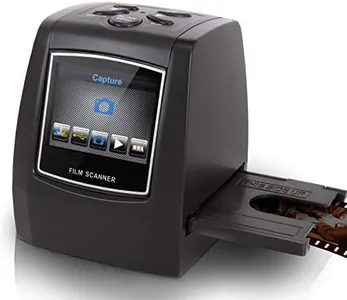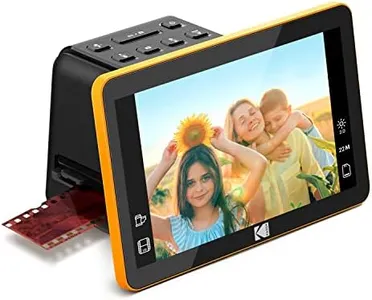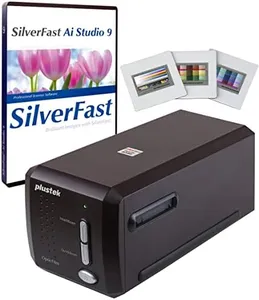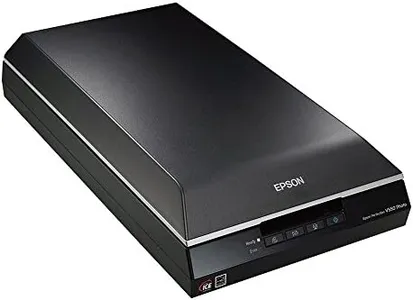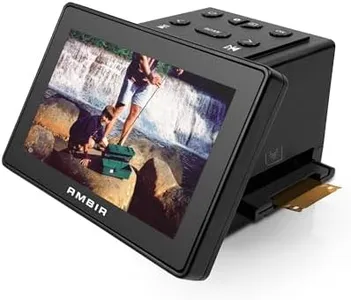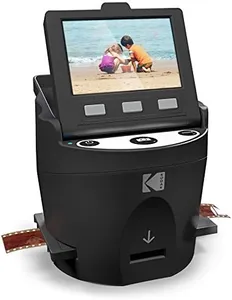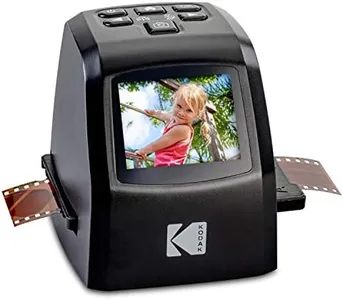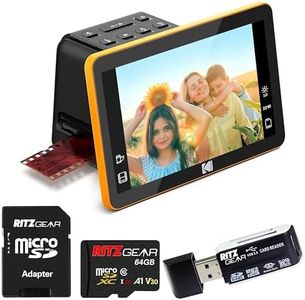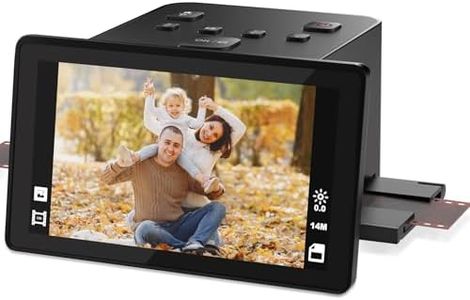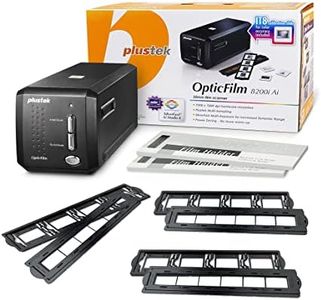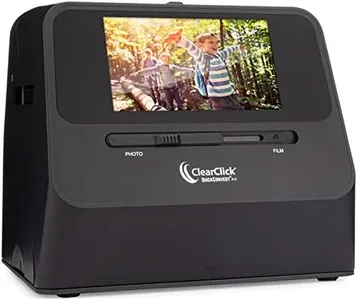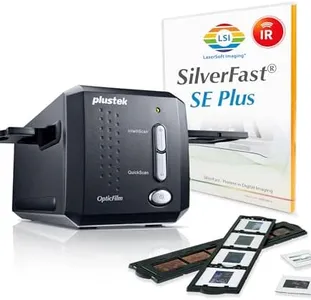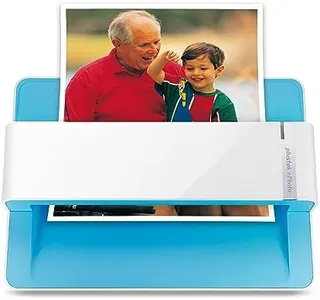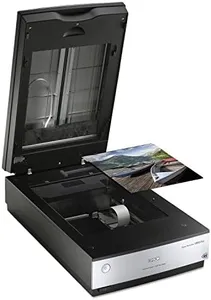10 Best Slide Scanners 2025 in the United States
Our technology thoroughly searches through the online shopping world, reviewing hundreds of sites. We then process and analyze this information, updating in real-time to bring you the latest top-rated products. This way, you always get the best and most current options available.

Our Top Picks
Winner
KODAK Slide N SCAN Film and Slide Scanner with Large 5” LCD Screen, Convert Color & B&W Negatives & Slides 35mm, 126, 110 Film Negatives & Slides to High Resolution 22MP JPEG Digital Photos
Most important from
10837 reviews
The Kodak Digital Film Scanner is a solid option for those looking to convert their old film and slide photos into digital format. With a high resolution of 22 megapixels, it ensures your images retain good detail when digitized. It supports various film types, including 35mm, 126, and 110 negatives, making it versatile for different collections. The large 5-inch LCD screen is a significant plus, allowing for easy previewing and editing of images, which is user-friendly for those who may not be tech-savvy.
One of the standout features is the quick-loading film inserts, which streamline the scanning process, making it faster and more convenient. The scanner also comes with basic editing options that are straightforward to use, allowing you to enhance and resize images simply by pressing a button.
There are some drawbacks to consider. The scanner requires an SD card for saving images, which is not included, so you'll need to budget for that extra purchase. While it claims to handle all old slides and negatives, results may vary with certain types of film, which could lead to inconsistent quality. Additionally, while the design is appealing, its lightweight build may not feel as robust as some might expect from a brand like Kodak.
Most important from
10837 reviews
Kodak Slide N Scan Max Digital Film Slide Scanner, Black/Yellow (RODFS70)
Most important from
1201 reviews
The KODAK 7" Digital Film Scanner is a solid choice for anyone looking to digitize old negatives and slides, making it particularly appealing for family historians or photography enthusiasts. One of its key strengths is its high resolution, converting 35mm, 126, and 110 film formats into 22MP JPEGs, which offers excellent image quality. The 7-inch LCD display is another highlight; it allows users to easily preview and edit images, making the scanning process straightforward and enjoyable. The inclusion of convenient film inserts and quick-loading technology simplifies the scanning experience, reducing frustration and time spent on setting up scans.
On the downside, the scanner's reliance on SD cards—sold separately—could be a setback for users who prefer an all-in-one solution. Additionally, while the advanced capture software is user-friendly, some advanced users might find it lacking in deeper editing features. The device is lightweight and stylish, but its design might not appeal to everyone.
Compatibility-wise, it connects easily to Type-C USB-enabled computers, which is a plus for modern users, although it lacks an HDMI cable for direct viewing on larger screens. The scanner supports a decent sheet capacity, which is good for batch scanning, but it may not be the fastest option available on the market, particularly if you have a large collection of slides and negatives to process.
The KODAK 7" Digital Film Scanner offers a user-friendly and effective solution for converting old films into digital files. It's best suited for casual users or those who want a hassle-free way to preserve memories, but more advanced users may need to consider their editing needs before purchasing.
Most important from
1201 reviews
Plustek OpticFilm 8300i Ai Film Scanner - Converts 35mm Film & Slide into Digital, Bundle SilverFast Ai Studio 9 + QuickScan Plus, Include Advanced IT8 Calibration Target (3 Slide)
Most important from
201 reviews
The Plustek OpticFilm 8300i Ai Film Scanner is designed specifically for digitizing 35mm film and slides, making it a solid choice for photography enthusiasts and professionals looking to archive their film collections. With a high resolution of 7200 dpi and a color depth of 16 bits, it captures intricate details and vibrant colors, which is essential for high-quality digital reproductions.
One of the standout features is its improved scanning speed, which is 38% faster than its predecessor, thanks to a new generation chip. This means quicker workflow, especially if you have a large number of slides to scan. The included SilverFast 9 software enhances the scanning process with advanced algorithms and functionalities, such as built-in infrared for dust and scratch removal, making it easier to achieve professional results.
The inclusion of the IT8 Calibration Target is a significant advantage, as it ensures accurate color calibration, which is crucial when digitizing film. The dual software package also provides flexibility; QuickScan Plus is user-friendly, while SilverFast offers more advanced options for detailed editing and processing. The scanner's weight of around 6.03 pounds may not make it the most portable option for those on the go. Additionally, while it does support multiple operating systems, potential users should ensure their system is compatible. Some users may find the initial setup and learning curve of the advanced software a bit challenging, especially if they are not familiar with digital imaging tools.
Most important from
201 reviews
Buying Guide for the Best Slide Scanners
When choosing a slide scanner, it's important to consider your specific needs and how you plan to use the device. Slide scanners are used to digitize slides, negatives, and sometimes even film, converting them into digital images that can be stored, edited, and shared easily. The right slide scanner for you will depend on factors such as the quality of the scans you need, the volume of slides you plan to digitize, and any additional features that might be important for your workflow. Here are some key specifications to consider when selecting a slide scanner.FAQ
Most Popular Categories Right Now
